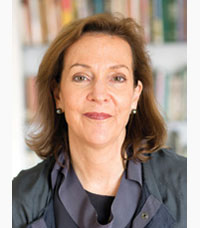 CHINATI FOUNDATION, MARFA, TEXAS / ART © JUDD FOUNDATION/LICENSED BY VAGA, NEW YORK, NY /FLORIAN HOLZHERR PHOTO, 2001
CHINATI FOUNDATION, MARFA, TEXAS / ART © JUDD FOUNDATION/LICENSED BY VAGA, NEW YORK, NY /FLORIAN HOLZHERR PHOTO, 2001
Design
An Experience in Control and Perception
IN MY CAREER AS AN ARCHITECT and designer, little has affected me more than the “Three- Dimensional Experience” at the Chinati Foundation in Marfa, Texas. Chinati is an internationally recognized museum created by Donald Judd (1928–1994)— his most ambitious project—which opened to the public in 1986. He intended it to be a place where art was shown according to the criteria and intentions of the artist, to embody every aspect of his powerful belief that installation, within any space, is a part of the art itself. Judd wanted large spaces and high ceilings, and the permanent placement of his own art and the art of his friends, especially that of John Chamberlain (1927–2011) and Dan Flavin (1933–1996). He developed this most sophisticated “ideal place for art” in direct response to the group shows that museums were staging in the late 1960s and early ‘70s in New York City. At Chinati, he created a focused experience of extraordinary scale—unique objects installed in harmony with architecture and the landscape of West Texas.

CHINATI FOUNDATION/ART © JUDD FOUNDATION/LICENSED BY VAGA/ DOUGLAS TUCK PHOTO, 2009, COURTESY THE CHINATI FOUNDATION
Judd created his remarkable installation of one hundred precise, mill aluminum boxes—each 41 by 51 by 72 inches—inside two former artillery sheds whose outer walls he transformed into transparent facades. He then placed fifteen massive concrete boxes—each just over 8 by 8 by 16 1/2 feet—in the landscape. The distance between Judd’s forms portrays scale in opposites: while one views the repetition of the light-strewn metal boxes as endless, one is also conscious of a massiveness that feels intimate in the concrete boxes in the landscape. Judd’s message is amplified when the installation is experienced from the inside looking out, and enhanced further when viewed in the landscape at sunrise.
The Chinati Foundation, Judd’s Gesamtkunstwerk, is an expression of control and a remarkable experience of perception, wherein surfaces that appear to be solid are actually voids. The serial experience of the metal boxes leads to a discovery—each interior is unique, as the aluminum is never in the same place, and the views, both reflective and actual, are never repeated. To experience the work with this additional element of light shining through the planes, interacting and reflecting, has a lasting impact. The “museum space” melts away as the experience of the whole emerges, and this affects the viewer’s understanding of Judd from then on. Installation is, in fact, an omnipresent element of fine art and object. So, too, is the experience of Flavin’s installations in a series of six U-shaped barracks; he is painting with light in architecture, and the all-encompassing experience of this work can’t be replicated.
 As founder and CEO of her eponymous firm, Suzanne Lovell has been creating curated environments for thirty years. Through the integration of architecture, sophisticated materials, custom furniture and textiles, antiques, and fine art, Suzanne explores the “Three-Dimensional Experience” in residential interior design. As a lecturer and keynote speaker, she frequently addresses her passion for collecting fine art and objects. Suzanne Lovell Inc. has received numerous national and international design awards; its projects are the featured in her book Artistic Interiors: Designing with Fine Art Collections (Abrams, 2011).
As founder and CEO of her eponymous firm, Suzanne Lovell has been creating curated environments for thirty years. Through the integration of architecture, sophisticated materials, custom furniture and textiles, antiques, and fine art, Suzanne explores the “Three-Dimensional Experience” in residential interior design. As a lecturer and keynote speaker, she frequently addresses her passion for collecting fine art and objects. Suzanne Lovell Inc. has received numerous national and international design awards; its projects are the featured in her book Artistic Interiors: Designing with Fine Art Collections (Abrams, 2011).












